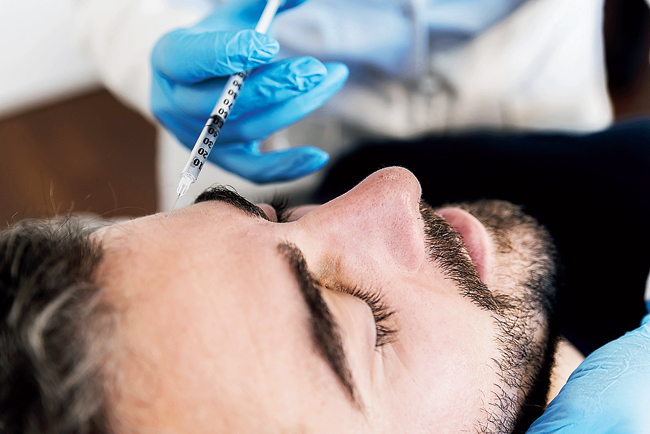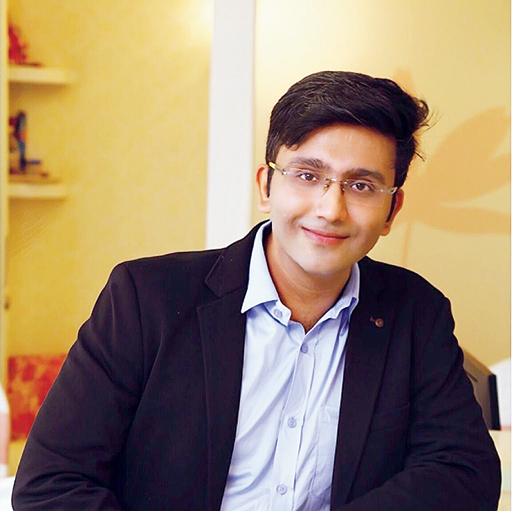Flashback to those days, when Samantha Jones said it in Sex And The City: “I don’t really believe in marriage. Now, Botox, on the other hand, that works every time.”
Flash forward to 2021, even today, that sounds like a very scandalous statement, very much like the word Botox. From popular culture to everyday life, Botox tends to raise a few brows! (pun intended). However, as a dermatologist, I feel that in cosmetic dermatology, if there is one thing that’s most misunderstood, misrepresented and often feared, it is Botox. With this article, my intent is to demystify it and shed some clinical light on this wonderful drug.
Technically speaking, Botox is the brand name of the drug called Botulinum toxin A, which is a protein derived from a bacteria. Other common brand names include Dysport, Xeomin and Nabota. The journey of this protein from a notorious toxin to a war weapon and ultimately a medical panacea and elixir of youth and beauty, is rather fascinating.
Botulinum toxin got its first USFDA approval in 1989 as treatment for crossed eyes and twitching of eyelids. However, the fact that Botox can actually take away wrinkles was in fact an accidental discovery (and might I say a very happy accident indeed). In 2002, FDA approved Botox for cosmetic treatments to treat wrinkles on forehead and, today, Botox has been integrated in treatments of many complex medical diseases such as cervical pain, migraine, oesophageal spasms and overactive bladder, to name a few.
So, if you were to ask me that if Botox paralyses the muscle that it is injected in, my answer would be yes. Sounds scary, right? Believe me, a lot of my patients ask me the same question. But actually it’s not scary at all. Once injected in a specific area, Botox goes and attaches itself to receptors in the muscles, affecting the nerves within. When the nerves release a chemical to make the muscle contract, Botox prevents those chemicals from attaching to those specific receptors, diminishing the muscle movement and decreasing the wrinkles caused by these muscles.
However, our bodies regenerate these receptors in time and, thus, the effect of Botox wears away, typically in three to six month’s time. Now you know why the effects of Botox aren’t permanent and thank God for that.
So this looks simple so far and you wonder, how can this beautiful drug which helps a million people across the globe, get such a bad rap? I think it all started when few celebs too many carried that look in the early part of the millennium! Yes, the classic Botox look — shiny, waxy, frozen foreheads, arched eyebrows — making you wonder if they are perpetually curious, anxious, surprised or all of them.
For a time, that look was the result of generous dosage of Botox and lack of technical finesse. However, it’s that look which actually made Botox famously infamous, and it became fodder for media ridicule, and now has totally gone out of vogue in favour of more natural, softer, subtle look. So much was the impact of that look on cultures across the globe that Botox became synonymous with everything that ever went wrong with cosmetic treatments and cosmetic surgeries. There is a lot that has been said about Botox since then, but let’s address a few myths and lets understand a few facts about Botox.
Botox myths

Sourced by the correspondent
Botox is not safe
As explained earlier, Botox is a medicine that has been approved by the USFDA for cosmetic treatments. It comes with a lot of research and is used for treating a variety of other diseases as well. However, since it’s a drug, it needs very trained doctors to be able to do these treatments.
Botox will freeze my entire face and shrink my eyes
Botox is only injected into specific areas of the face to temporarily remove the wrinkles. Technological refinement such as micro-Botox has now enabled us to deliver very natural-looking results, which only make you look more youthful and rejuvenated. However, a trained injector will tell you what dosage you would need and would discuss optimum results with you beforehand.
Botox is very painful
Most people who take Botox injections describe them as mild discomfort when the doctor injects. Even if you have a low pain threshold, the needles used are extremely thin and lot of pain-reducing devices and numbing creams are employed to make the treatment as painless as possible.
Botox is addictive
Botox per se doesn’t have any chemicals that can cause addiction. However, you might love the results so much that you might want to repeat the treatment once the effect wears off. But do you call that addiction? Do you call colouring your greys addiction? I doubt that.
If I stop doing Botox, I will age faster
Okay! This is one of the most common questions that I get asked. In fact, the truth is that regular Botox takers develop far fewer wrinkles over time because their muscles don’t contract as much. And that’s the basis of a new trend called preventative Botox, which has now picked up in India as well.
Botox facts

Sourced by the correspondent
Botox is not permanent
The effects of Botox wear off in three to six months. So one needs to do Botox twice or thrice a year to maintain results.
Men do Botox too!
It’s called Brotox. A lot of men opt for Botox too. However, it takes artistic eye and nuance and restraint on the part of the injector to retain their masculine charm after Botox injections.
Botox doesn’t work on fixed lines
So, Botox only works for dynamic wrinkles, the ones that are produced when muscles move and contract. It will only soften fixed wrinkles.
Botox isn’t just for wrinkles
A trained injector can used Botox for a variety of cosmetic corrections like slimming the face, making the jawline sharper, decreasing neck wrinkles and improving the smile. But these are very advanced indications, and you need a very experienced injector for these.
You can start taking Botox in your 30s
As shocking as it sounds, the earliest signs of ageing can be visible as early as in the 30s. So, it might be the time when you might want to start taking Botox, especially if you have strong frown lines or early ageing.
Maybe a decade back Botox was generally considered a treatment that only celebrities needed or maybe just the super-rich and super-vain did. But with changing social mores, as the beauty industry has grown by leaps and bounds and awareness has increased, Botox injections have become one of the most common cosmetic treatments.
More and more millennials are showing interest and asking about Botox during consultations. In fact, it’s heartening to see more and more people coming out on social media and speaking about taking Botox. There are loads of things we need to normalise in 2021 and one of them would be people taking Botox and fillers to augment their beauty.
Botox is not some forbidden, exotic thing. It is, at end of the day, a medicine and the results are generally as good as your doctor.
I have this beautiful patient who once told me that, “while other women spend on bags and jewellery, I invest on my face and I do it for myself !”. Now that is something emphatic, something empowering, something inspiring, and isn’t that the whole purpose of beauty?

Dr Ishad Aggarwal, MD, is a consultant dermatologist. He is also a skin, laser and aesthetic medicine expert and a trainer for Botox and fillers. Find him on Instagram @skindoc_ishad










